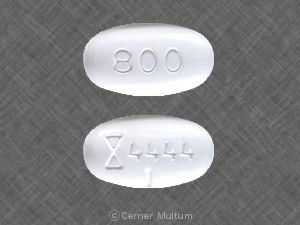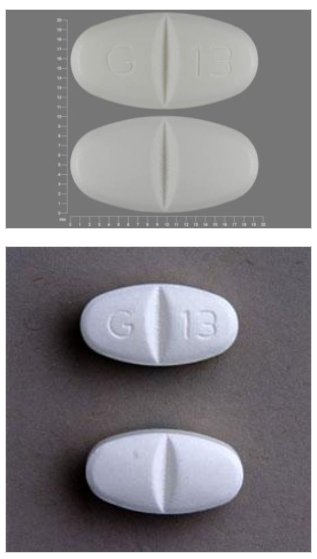Gabapentin belongs to the class of medications called anti-epileptics. It is used in combination with other seizure control medications to manage and prevent seizures associated with epilepsy. Gabapentin does not cure epilepsy and only works to control seizures as long as the medication is taken. Gabapentin works by affecting the transmission of nerve signals in the brain.
DIN (Drug Identification Number)
| 02239718 | Neurontin 800 mg tablet |
| 02239717 | Neurontin 600 mg tablet |
| 02084287 | Neurontin 400 mg capsule |
| 02084279 | Neurontin 300 mg capsule |
| 02084260 | Neurontin 100 mg capsule |
Usual Adult Dose of Gabapentin for Epilepsy:
Initial dose: 300 mg orally on day one, 300 mg orally twice a day on day two, then 300 mg orally 3 times a day on day three.
Maintenance dose: 900 to 1800 mg orally in 3 divided doses. If necessary, the dose may be increased using 300 mg or 400 mg capsules three times a day up to 1800 mg/day. Dosages up to 2400 mg/day have been well tolerated in long-term clinical studies. Doses of 3600 mg/day have also been administered to a small number of patients for a relatively short duration, and have been well tolerated. The maximum time between doses in the three times a day schedule should not exceed 12 hours.

The safety and effectiveness of gabapentin available under the trade name Gralise (R) or Horizant (R) in patients with epilepsy has not been studied.
Usual Adult Dose for Postherpetic Neuralgia:
Initial dose: 300 mg orally on day one, 300 mg orally twice a day on day two, then 300 mg orally 3 times a day on day three.
The dose may be titrated up as needed for pain relief to a daily dose of 1800 mg.
Maintenance dose: 900 to 1800 mg orally in 3 divided doses.
Efficacy was demonstrated in clinical studies over a range of 1800 mg/day to 3600 mg/day. However, no additional benefit was demonstrated from the use of doses over 1800 mg/day.
Gabapentin available under the trade name Gralise (R):
Maintenance dose: Gralise (R) should be titrated to 1800 mg orally once daily with the evening meal.
Recommended titration schedule:
- Day 1: 300 mg orally with the evening meal
- Day 2: 600 mg orally with the evening meal
- Days 3 through 6: 900 mg orally with the evening meal
- Days 7 through 10: 1200 mg orally with the evening meal
- Days 11 through 14: 1500 mg orally with the evening meal
- Day 15: 1800 mg orally with the evening meal
Gralise (R) is not interchangeable with other gabapentin products because of differing pharmacokinetic profiles that affect the frequency of administration.
Gabapentin enacarbil extended release tablets available under the trade name Horizant (R):
The recommended dosage is 600 mg orally twice daily. Therapy should be initiated at a dose of 600 mg orally in the morning for 3 days of therapy, then increased to 600 mg twice daily (1,200 mg/day) on day four.
Gabapentin enacarbil extended release tablets available under the trade name Horizant (R) and gabapentin are not interchangeable.

Usual Adult Dose for Restless Legs Syndrome:
Gabapentin enacarbil available under the trade name Horizant (R):
600 mg orally once daily with food at about 5 PM
Usual Pediatric Dose for Epilepsy:
Less than 3 years: Effectiveness has not been established.
Greater than or equal to 3 and less than 12 years:
Starting Dose: ranges from 10 to 15 mg/kg/day in 3 divided doses.
Effective Dose: reached by upward titration over a period of approximately 3 days. The effective dose of gabapentin in patients 5 years of age and older is 25 to 35 mg/kg/day and given in divided doses (three times a day). The effective dose in pediatric patients ages 3 and 4 years is 40 mg/kg/day and given in divided doses (three times a day). Gabapentin may be administered as the oral solution, capsule, or tablet, or using combinations of these formulations. Dosages up to 50 mg/kg/day have been well tolerated in a long term clinical study. The maximum time interval between doses should not exceed 12 hours.
Greater than 2 years:
Initial dose: 300 mg orally on day one, 300 mg orally twice a day on day two, then 300 mg orally 3 times a day on day three.
Maintenance dose: 900 to 1800 mg orally in 3 divided doses. If necessary, the dose may be increased using 300 mg or 400 mg capsules three times a day up to 1800 mg/day. Dosages up to 2400 mg/day have been well tolerated in long term clinical studies. Doses of 3600 mg/day have also been administered to a small number of patients for a relatively short duration, and have been well tolerated. The maximum time between doses in the three times a day schedule should not exceed 12 hours.
The amount of medicine that you take depends on the strength of the medicine. Also, the number of doses you take each day, the time allowed between doses, and the length of time you take the medicine depend on the medical problem for which you are using the medicine.
- For oral dosage forms (capsules, liquid, and tablets):
- For epilepsy:
- Adults and teenagers 12 years of age and older—At first, 300 milligrams (mg) 3 times per day. Your doctor may adjust your dose as needed. However, the dose is usually not more than 1800 mg per day.
- Children 3 to 12 years of age—Dose is based on body weight and must be determined by your doctor. The starting dose is 10 to 15 milligrams (mg) per kilogram (kg) of body weight per day and divided in 3 doses. Your doctor may adjust your dose as needed.
- Children younger than 3 years of age—Use and dose must be determined by your doctor.
- For postherpetic neuralgia:
- Adults— At first, 300 milligrams (mg) as a single dose in the evening. Your doctor may adjust your dose as needed. However, the dose is usually not more than 1800 mg per day.
- Children—Use and dose must be determined by your doctor.
- For epilepsy:
- For oral dosage form (extended-release tablets):
- For postherpetic neuralgia:
- Adults— At first, 600 milligrams (mg) in the morning. Then, your doctor will increase your dose to 600 mg 2 times per day.
- Children—Use and dose must be determined by your doctor.
- For restless legs syndrome:
- Adults—600 milligrams (mg) as a single dose at about 5 PM.
- Children—Use and dose must be determined by your doctor.
- For postherpetic neuralgia:
Missed Dose
If you miss a dose of this medicine, take it as soon as possible. However, if it is almost time for your next dose, skip the missed dose and go back to your regular dosing schedule. Do not double doses.
Horizant® extended-release tablets: If you miss a dose of this medicine, skip the missed dose and go back to your regular dosing schedule.
